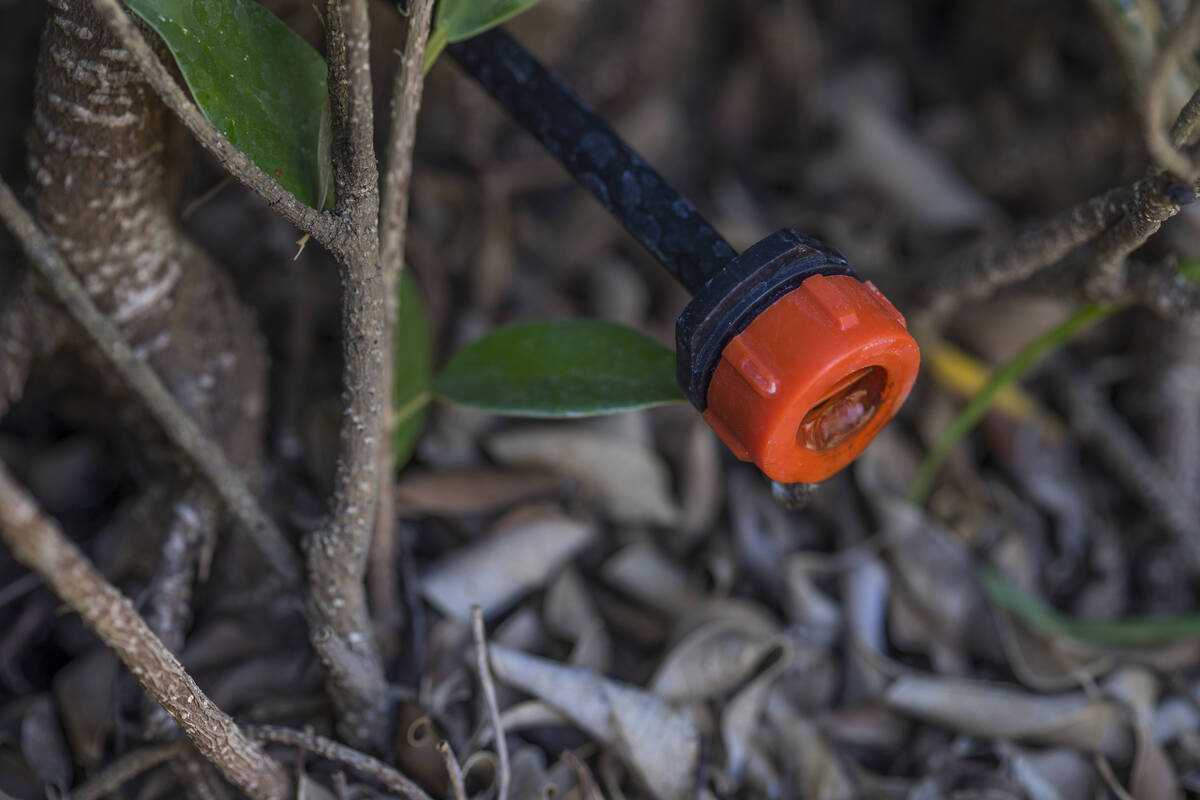Why watering trees, shrubs deeply is so important
Q: You have always said to add watering days instead of more water per application. During the hottest September on record, the water district ads told us to water fewer days (three in fall and one day a week in winter). I believe a lot of us lost many plants because of it, from the looks of my neighborhood and as I drive around town. Because of the prospect of $1,500 plus water bills, I replaced the entire drip system last summer and monitored it every day to do what I could to conserve water. I reduced my consumption by over half.
A: Three times each week is how often we should apply water to trees and shrubs during the summer, not in the fall when it’s cooler. That frequency of irrigation is reserved for the heat of the summer in most cases. I think you can water less often than that in November when it is cooler. Once (or possibly twice a week) for trees and shrubs should be enough if the water is applied deeply. Make sure that all the roots are wet. Taller and bigger plants have deeper roots, so they need more water applied. Add more drip emitters to the outside of the plants or an extra ring of drip tubing as they get bigger.
Poke thin rebar into the soil to judge how deeply you are watering. Do that soon after applying the water.
When skipping a day of watering, apply two days worth of water. If skipping three days, apply three days worth of water. During the coldest part of winter (usually mid-December through mid-January), usually once a week or watering 10 days apart should be enough.
I think you have what I said backward. Water deeply enough that trees and shrubs can make it until the next time you are allowed to water. Deep watering develops deep roots. Watering daily encourages surface roots to grow.
How deep to water? As deep as the roots is a good answer. It will cost money to water deeply upfront, but the cost works out nearly the same as if you were watering daily. You will use slightly less water because of a lack of evaporation watering deeply.
If you want to save water, use desert-adapted plants, make sure they are in scale with your home and don’t use too many. Resist the temptation to water plants more than needed.
There are lots of good ideas out there that use no water, including changes in rock sizes, textural and color differences, and art forms.
The only plants needing daily watering include the fescue type of lawns and most vegetables.
Q: I wonder if the logic behind painting trees white has validity here in Las Vegas, especially with our rising temperatures. Our HOA community has hundreds of Mondell pines that are approaching 50 years old.
A: Trees are painted with white or light-colored latex paint in the desert for the 4 or 5 degrees difference in lowering the surface temperature on the trunks. Don’t use the paint straight. Mix it with water, about 50/50. It paints on easier, and it’s cheaper that way. Painting the trees won’t help if there are other problems, such as a water shortage.
After seeing trunks of trees painted white, the fad caught on. It looked pretty. People started to think that many different kinds of trees should have their trunks painted (not understanding the reason), so they started doing it to all trees to beautify them and make them look different.
In the beginning it was done on younger, thin-barked trees to lower their surface temperature during the heat of summer. Leaving low-lying limbs to shade the south and west sides of trees helped to do the same thing. Anything that shades the trunk helps reduce the risk of sun damage. Painting tree trunks, at the beginning, wasn’t done for aesthetics.
Just like people, plant life is vulnerable to damage from the sun. In areas with very hot climates, deciduous trees may be prone to sunscald year-round, not just during the summer.
When painting a tree trunk white, make sure to paint as low as possible up to at least where the sun is damaging. You can even paint up to the point where the first major branches join the trunk for additional protection. It is essential to cover the trunk thoroughly. Every few years, reapply the paint as the tree grows in diameter and the paint washes from the trunk until it develops bark.
Q: When is the best time to plant a windmill palm?
A: The best time to plant palm trees is midspring when the soil is warming up. Palms are monocots; they grow differently from most other woody type trees and shrubs.
Windmill palm is more cold hardy (15 degrees) than most other palms. That means its roots should grow in colder soils than other palms. Soil temperatures should be at least 55 degrees for root growth of cold hardy palms. The warmer the environment, the faster the growth.
Bob Morris is a horticulture expert and professor emeritus of UNLV. Visit his blog at xtremehorticulture.blogspot.com. Send questions to Extremehort@aol.com.
Chrysanthemum Show
Want to see some spectacular mums that people around the country have grown?
Visit the National Chrysanthemum Show from 1 to 5 p.m. Nov. 13 and 10 a.m. to 5 p.m. Nov. 14 at Santa Fe Station. This event is free and open to the public event.


















